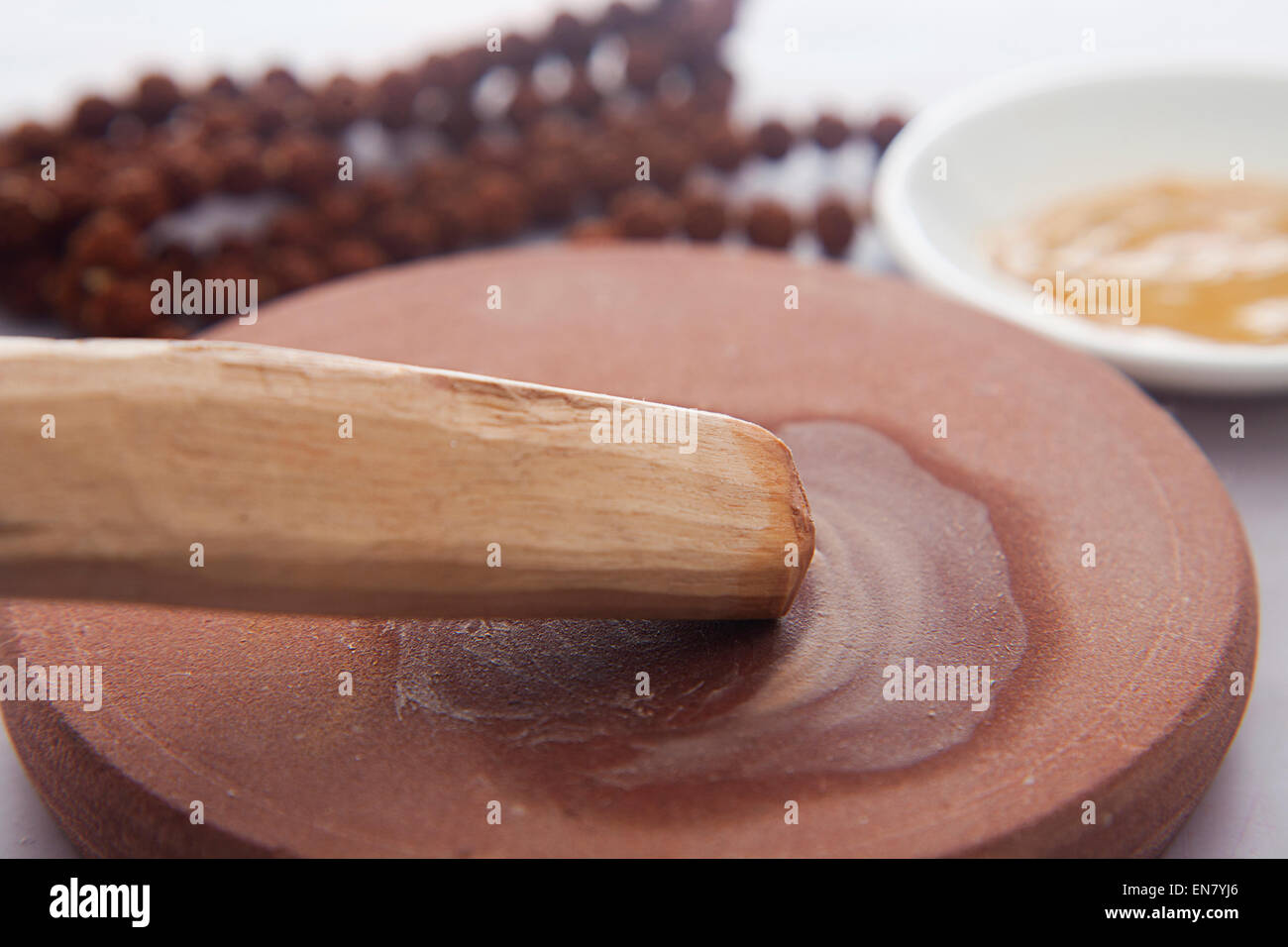[spacer height="20px"]

Chandana tree
Chanada or Sandalwood is a class of woods from trees in the genus Santalum. The woods are heavy, yellow, and fine-grained, and, unlike many other aromatic woods, they retain their fragrance for decades. Sandalwood oil is extracted from the woods for use. Sandalwood is the second-most expensive wood in the world, after African blackwood. Both the wood and the oil produce a distinctive fragrance that has been highly valued for centuries. Consequently, species of these slow-growing trees have suffered overharvesting in past centuries.
 Indian sandalwood is very sacred in the Hindu Ayurveda and is known in Sanskrit as chandana. The wood is used for worshipping the god Shiva, and it is believed that goddess Lakshmi lives in the sandalwood tree. The wood of the tree is made into a paste using sandalwood powder, and this paste is integral to rituals and ceremonies, to make religious utensils, to decorate the icons of the deities, and to calm the mind during meditation and prayer. It is also distributed to devotees, who apply it to their foreheads or necks and chests. Preparation of the paste is a duty fit only for the pure, so is entrusted only to priests when used in temples and during ceremonies.
Indian sandalwood is very sacred in the Hindu Ayurveda and is known in Sanskrit as chandana. The wood is used for worshipping the god Shiva, and it is believed that goddess Lakshmi lives in the sandalwood tree. The wood of the tree is made into a paste using sandalwood powder, and this paste is integral to rituals and ceremonies, to make religious utensils, to decorate the icons of the deities, and to calm the mind during meditation and prayer. It is also distributed to devotees, who apply it to their foreheads or necks and chests. Preparation of the paste is a duty fit only for the pure, so is entrusted only to priests when used in temples and during ceremonies.
:max_bytes(150000):strip_icc():format(webp)/powdered-and-whole-sandalwood-90258078-578cfaba5f9b584d20db4620.jpg) The paste is prepared by grinding wood by hand with granite slabs shaped for this purpose. With the gradual addition of water, a thick paste forms (called gandha ಗಂಧ in Kannada) and is mixed with saffron or other such pigments to make chandanam. Chandanam, further mixed with herbs, perfumes, pigments, and some other compounds, results in javadhu. Kalabham, chandanam, and javadhu are dried and used as kalabham powder, chandanam powder, and javadhu powder, respectively. Chandanam powder is very popular in India and is also used in Nepal. In Tirupati after religious tonsure, sandalwood paste is applied to protect the skin. In Hinduism and Ayurveda, sandalwood is thought to bring one closer to the divine. Thus, it is one of the most used holy elements in Hindu and Vedic societies.
The paste is prepared by grinding wood by hand with granite slabs shaped for this purpose. With the gradual addition of water, a thick paste forms (called gandha ಗಂಧ in Kannada) and is mixed with saffron or other such pigments to make chandanam. Chandanam, further mixed with herbs, perfumes, pigments, and some other compounds, results in javadhu. Kalabham, chandanam, and javadhu are dried and used as kalabham powder, chandanam powder, and javadhu powder, respectively. Chandanam powder is very popular in India and is also used in Nepal. In Tirupati after religious tonsure, sandalwood paste is applied to protect the skin. In Hinduism and Ayurveda, sandalwood is thought to bring one closer to the divine. Thus, it is one of the most used holy elements in Hindu and Vedic societies.
